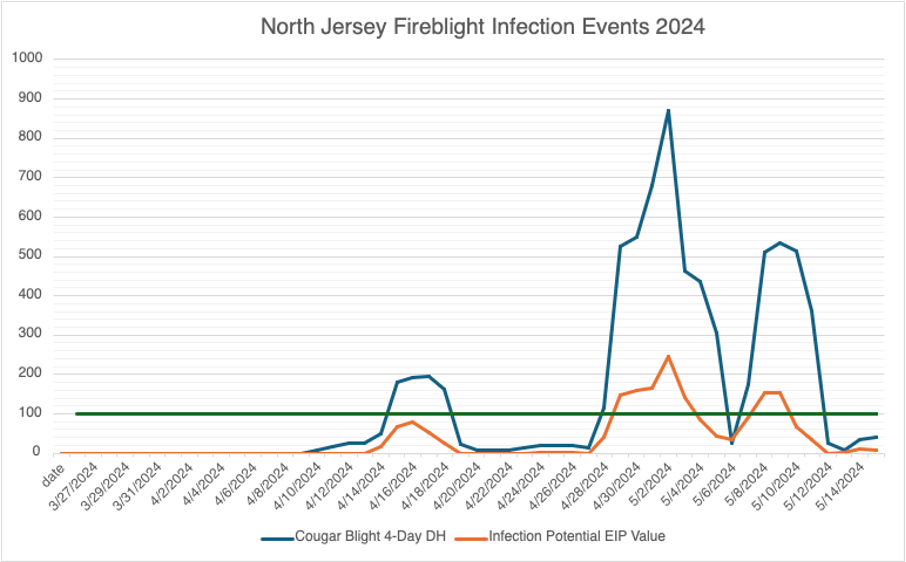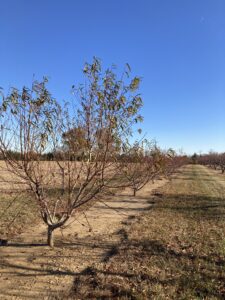NORTH JERSEY COMMERCIAL
FRUIT GROWERS MEETING
March 5, 2025
8:30 am – 3:30 pm
Hunterdon County Complex
314 State Route 12, Bldg. 1
Flemington, NJ
Program
Program Chair
Megan Muehlbauer, PhD
Agriculture and Resource Management Agent
Cooperative Extension of Hunterdon County
8:30 – Registration
Coffee and pastry, compliments of industry sponsors
9:00 – Welcome and Introductions
9:10 – North Jersey Tree Fruit IPM Updates
Kaitlin Quinn, North Jersey Fruit IPM Program Associate, Cooperative Extension
9:40 – Mycorrhizal Fungi Applications and their Effect on Soil Biology and Tree Health
Megan Muehlbauer PhD, ANR Agent, Cooperative Extension of Hunterdon
10:10 – Pest Updates for Tree Fruit in North Jersey
Anne Nielsen PhD, Specialist in Fruit Entomology, Cooperative Extension
10:40 – Weed Management Technologies for the Orchard and Vineyard
Thierry Besançon, Specialist in Weed Science, Cooperative Extension
11:10 – Compliance in Pest Management: Status Update for Chlorpyrifos and the Endangered Species Act
Janine Spies PhD, Statewide Program Leader and Agriculture Agent in Fruit IPM, Cooperative Extension
11:40 – Update on Farm Service Programs
Laura LaFevre, County Executive Director, Hunterdon/Somerset Office, Farm Service Agency
11:50 – Jersey Fresh Marketing Update
Joe Atchison III, Assistant Secretary, NJ Dept. of Agriculture
Christine Fries, Coordinator of Agricultural Marketing, NJ Dept. of Agriculture
12:00 – LUNCHEON (pre-registration required)
12:50 – What is New from Industry
1:10 – Understanding How Irrigation Water can be a Source for Soilborne Diseases in the Orchard
Kari Peter, Associate Research Professor Tree Fruit Pathology, Penn State University
1:40 – Bitter Rot in Apples What we Know and How to Control it
Kari Peter, Associate Research Professor Tree Fruit Pathology, Penn State University
2:10 – Pesticide Protection, Precautions and Procedures
Spencer Kerkhof, Environmental Specialist, Pesticide Compliance & Enforcement NJDEP
2:40 – What can the Rutgers Diagnostic Lab do for You
Rich Buckley, Director of the New Jersey Soil Testing & Diagnostic Services
Sabrina Tirpak, Laboratory Researcher II, Plant Diagnostic Laboratory Rutgers
3:10 – Pesticide Recertification Credits and Adjourn
NJDEP PESTICIDE RECERTIFICATION CREDITS ARE ANTICIPATED
Click here and fill out this form to register for the meeting then fax or email to:
Fax: (908) 806-4735
E-mail: kfrey@co.hunterdon.nj.us
If you have any questions please call Kim Crommelin: (908)-788-1338



 Once leaves begin to turn yellow, brown, and drop off, you can stop supplemental watering. However, if you are in a prolonged drought, as we are currently, there are some factors to consider. For perennial crops that overwinter, severe drought can compromise their ability to store sufficient reserves, which can lead to reduced vigor and potential losses during the winter. It can be the case that during periods of drought, plants may invest more energy into developing deeper root systems; however, over a prolonged period of time, persistent stresses can hinder root development, which can negatively impact water intake and nutrient availability. Additionally, whereas hydrated soils can buffer the penetration of freezing temperatures through the soil surface, dry soils do not offer the same protection, and freezing temperatures can penetrate deeper.
Once leaves begin to turn yellow, brown, and drop off, you can stop supplemental watering. However, if you are in a prolonged drought, as we are currently, there are some factors to consider. For perennial crops that overwinter, severe drought can compromise their ability to store sufficient reserves, which can lead to reduced vigor and potential losses during the winter. It can be the case that during periods of drought, plants may invest more energy into developing deeper root systems; however, over a prolonged period of time, persistent stresses can hinder root development, which can negatively impact water intake and nutrient availability. Additionally, whereas hydrated soils can buffer the penetration of freezing temperatures through the soil surface, dry soils do not offer the same protection, and freezing temperatures can penetrate deeper.